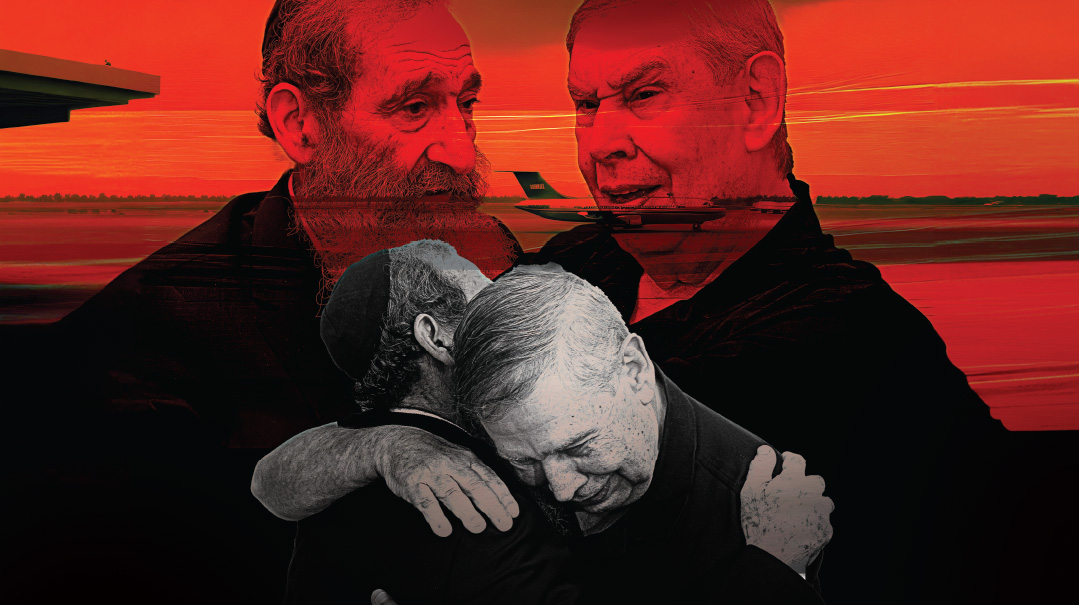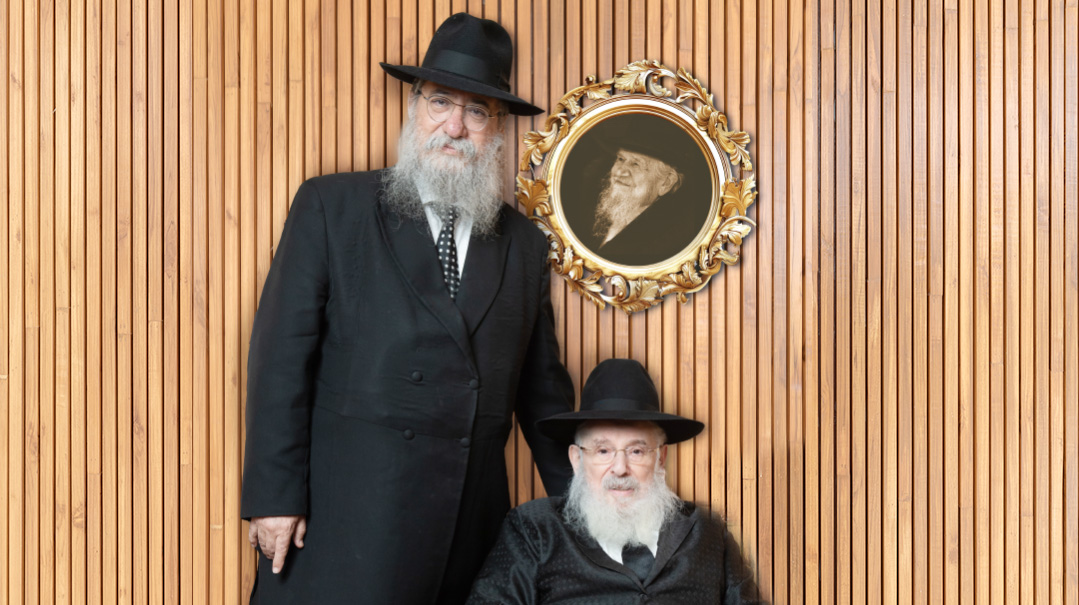Mountain Jews
| August 1, 2023A century of summer guests in the Catskills hamlet of Hunter
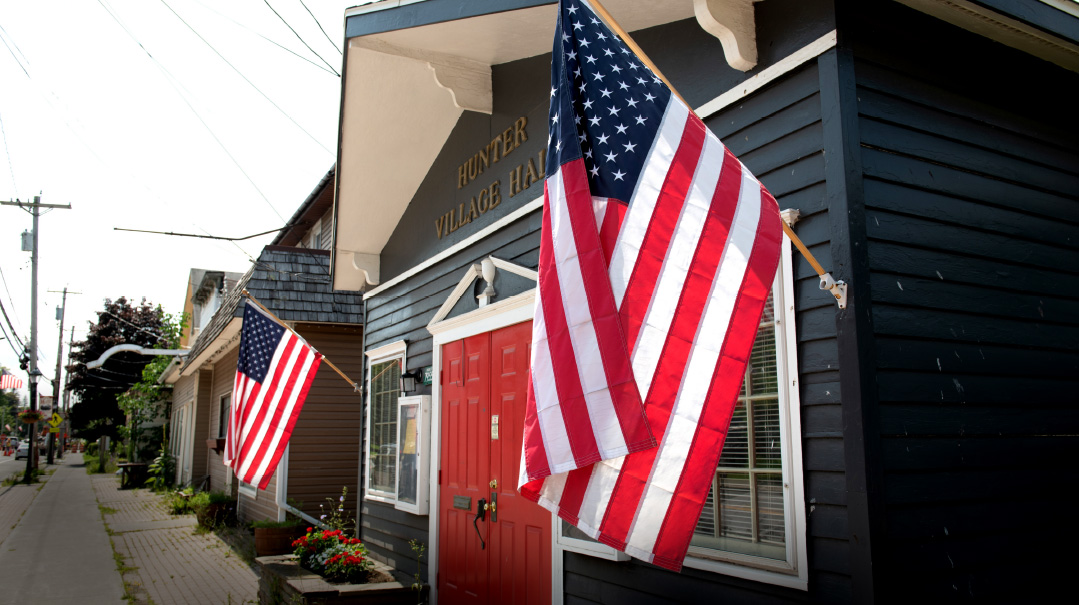
Photos Jeff Zorabedian, Family archives
Nestled in the picturesque Catskill region of New York State is Hunter, New York, an idyllic village which takes its name from the town’s main attraction, the towering Hunter Mountain. At 4,040 feet, the mountain is the tallest in Greene County and the second tallest in all of the Catskills. Its lush and verdant forests dominate the area’s skyline, affording those in the vicinity breathtaking scenery, the mountain’s fertile expanse pausing only to allow the meticulously designed ski slopes to gracefully cut through.
Main Street of this peaceful village lies at the mountain's foot. The town is divided by a babbling brook that provides both a background rhythm and a refreshing water source for locals and tourists to cool off in during summer months. Hunter’s Main Street boasts its single-vehicle EMS department, a fire station, an old and dusty post office, and the Hunter Village City Hall, a small building consisting of a single auditorium and a push-pin bulletin board fixed on its exterior notifying passersby of local news and regulations. (There isn’t that much to report on in this town. A visit to the village’s website contains two notices: one that the village’s three trustees will hold an emergency meeting at 1:00 on October 28, 2022, and a second telling whoever lost something in the vicinity of Karen’s Country Food Truck to please contact Kathleen at extension 4.)
A walk down the street lined with American flags and historic lampposts takes you past an old thrift shop and an antique store. Set back about 25 feet from the street stands the village’s historic Hunter Synagogue. Built in 1914, the building has a white façade interrupted by columns of robins blue and a proud stained-glass Magen David gracing the top of its third story.

Hunter’s Scoharie Creek is a fun cooling-off option for the summer visitors who, even after a hundred years, continue to converge on the town where not too much has changed
The synagogue’s interior has a small lobby, and two glass doors lead you into the main sanctuary, a charming room clearly from a bygone era but impeccably preserved. The walls and ceiling are completely paneled over with walnut wood slats, and decorative, old fashioned double lamps give off a warm glow. Large, stained-glass panels with artistic patterns forming different scenes from the Jewish calendar allow the Hunter sunlight to pour through, bathing the shul’s quaint wood and red velvet benches in a warm, natural light.
Its bimah is raised on a platform that is level to the shul’s aron kodesh, which stands erect at the front, finely crafted in oak panels and crowned with two lions holding a blue Luchos, the Aseres Hadibros lettered in gold. The aron kodesh is flanked by an American and Israeli flag respectively, both bearing the ceremonial yellow tassels at their fringes.
During the year, the historic synagogue remains largely empty, save for the High Holiday services attended by some locals and occasionally, weather and mood permitting, a monthly Friday night dinner held in a small annex off to the side of the vestibule. But come July and August, or more accurately Tammuz and Av, and the sleepy village suddenly sees a stream of guests who make their way up to Hunter for their bein hazmanim vacation.
Three times every day, the migrating menfolk convene in the historic synagogue, a decidedly yeshivish crowd occupying its stately pews. Though it’s a far cry from the bright, modern, and air-conditioned batei medrash they are accustomed to in their hometowns, the historic synagogue is more than a venue to chap a quick minyan — the shul is a highlight, an almost magical part of their stay.
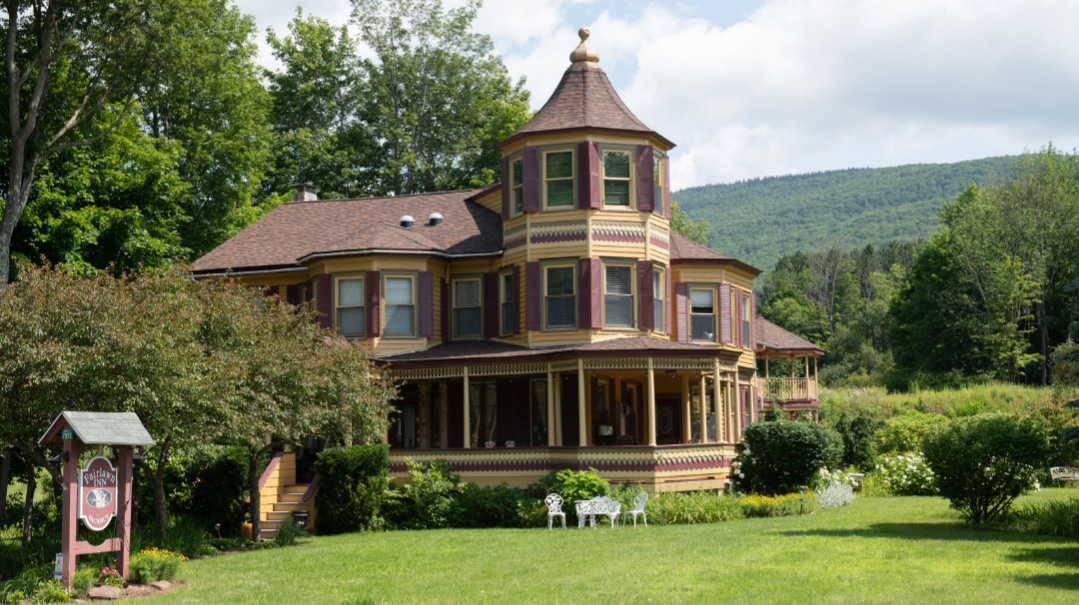
The original shul built in 1904 by businessman and philanthropist Harry Fischel. While the shul didn’t endure, the mansion he built nearby did, still standing in its original grandeur
Mansion on Main Street
A bronze plaque affixed to the synagogue door solemnly informs visitors that they are entering historic grounds. In 1999, the 120-year-old synagogue was added to the National Register of Historic Places, the US Interior Department’s official list of the nation’s sites and objects deemed worthy of preservation for their historical significance or “great artistic value.” The criteria for a listing on the National Register includes excellence in architecture, and the file within the national archives catalog enthuses about the edifice’s physical structure, describing the building in painstaking detail. What it doesn’t note is that the synagogue has rich religious and historical significance as well.
Records indicate that the synagogue was constructed between 1909 and 1914, and was actually the second shul to be built in Hunter. Preceding it by just five years was the “Fischel Shul,” an impressive shul that was located just down the road on Main Street and held the distinction of being the very first Orthodox house of worship in the entire Catskill region.
The Fischel Shul, built by the great early 20th century businessman, philanthropist and askan Harry Fischel, was constructed to accommodate city dwellers who, like their grandchildren in generations to come, were attracted by the cool Catskills air, and decided to migrate upstate for the summers. Like today, large segments of those early summer dwellers chose to vacation in Liberty and Monticello, the area referred to colloquially as the “mountains,” though many folks chose to continue their journey north to an even higher altitude, to the Tannersville-Hunter area.
Harry Fischel himself had been summering in Hunter since 1899. Shortly after the turn of the century, he bought a modest home situated on Main Street facing Hunter Mountain, and in 1904 had it transformed into a stunning 5,200-square-foot summer residence, presumably utilizing his own experience as an architect and builder to design the palatial estate. The 10-bedroom, 11-bathroom Queen Anne mansion, complete with an octagonal corner tower, two oversized wraparound porches, meticulously manicured lawns, and an elaborate interior still stands in its original beauty today, and operates as a boutique (non-kosher) inn.
(There are two amenities from the original home that are no longer in use: the succah and private mikveh. A Fischel great-grandson explained that Mr. Fischel built the home mikveh in the early 1900s, when the accepted halachic standards surrounding mikvaos were lax; when the remnant of European Jewry was transplanted to America some 40 years later, certain chumros became commonplace, and the mikveh was no longer considered acceptable. The family refrained from using it, but kept the structure as an attraction for visitors to see.)
Six years after the Fischel family started occupying their summer getaway, several of Hunter’s Jewish summer residents approached Mr. Fischel and complained that they did not have a proper place in which to daven on Shabbos. A man of an indomitable magnanimous spirit, Mr. Fischel undertook the project singlehandedly. He secured a lot and got to work building a shul, commencing work on a late Motzaei Shabbos in the beginning of August and finishing a splendid edifice in time for the first tefillos to be held that summer.
The vacationers were thrilled to have a proper shul to daven in, yet there were others in the community — namely some of its year-round Orthodox residents — who were none too pleased with the shul.
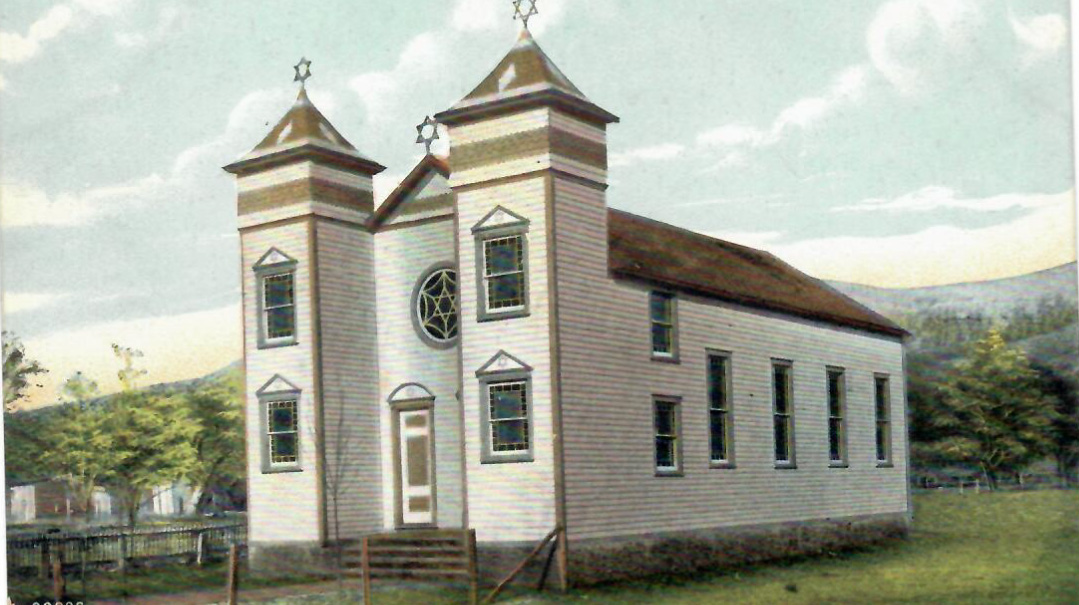
“The locals felt like the Fischel Shul catered too much to the summer residents and that they weren’t getting the kind of recognition they deserved,” said Rabbi Aaron I. Reichel, a great-grandson of Harry Fischel, who lives in Kew Gardens and serves as executive director of the Harry & Jane Fischel Foundation.
The year-round residents banded together to form a breakoff minyan. They purchased the property directly across from the Fischel family mansion, and constructed their very own shul, commencing work in 1909 and completing it in 1914.
Despite the tensions associated with its founding, the location of the new shul, the current Hunter Synagogue, turned out to be providential when several years into its existence, the Fischel Shul was expropriated by the local government as it flexed its powers under eminent domain. The physical structure was razed, but some of its wood salvaged and transported down the road, where it was utilized to build the annex to the Hunter Synagogue, still visible today. In recognition of the “merger” of sorts, the historical banner from the village of Hunter proudly affixed to an antique lamppost facing the current synagogue acknowledges the landmark as “The Hunter Synagogue — The Fischel Shul.”
One of the founders of the breakaway minyan was Mr. Isaac Slutzky, an Orthodox Jewish refugee from Russia who moved from the Lower East Side to the Catskill region to try his hand at farming. While his agricultural ambitions never were realized, his arrival would have a transformative effect on the entire area.
Isaac had four children, among them Orville and Israel, two brothers who went on to found and operate the iconic Hunter Mountain ski resort. Assiduous and industrious, the Slutzky brothers built a ski empire, blending both innovation (such as snow making machine cannons) and classic marketing, by schlepping celebrities to come up and have themselves photographed skiing or riding the mountain’s chairlift, in the hope that the adoring masses would follow their lead. (They did.)
The Slutzky brothers’ success led them to both fortune and fame, but America in the early 1940s didn’t provide the same opportunity for success in their faith, and the brothers slipped away from observance. Yet that didn’t stop their commitment to their father’s wooden shul down at the bottom of the mountain, and by the 1950s Israel had assumed its presidency, setting the stage for a glorious era for the Hunter Synagogue.
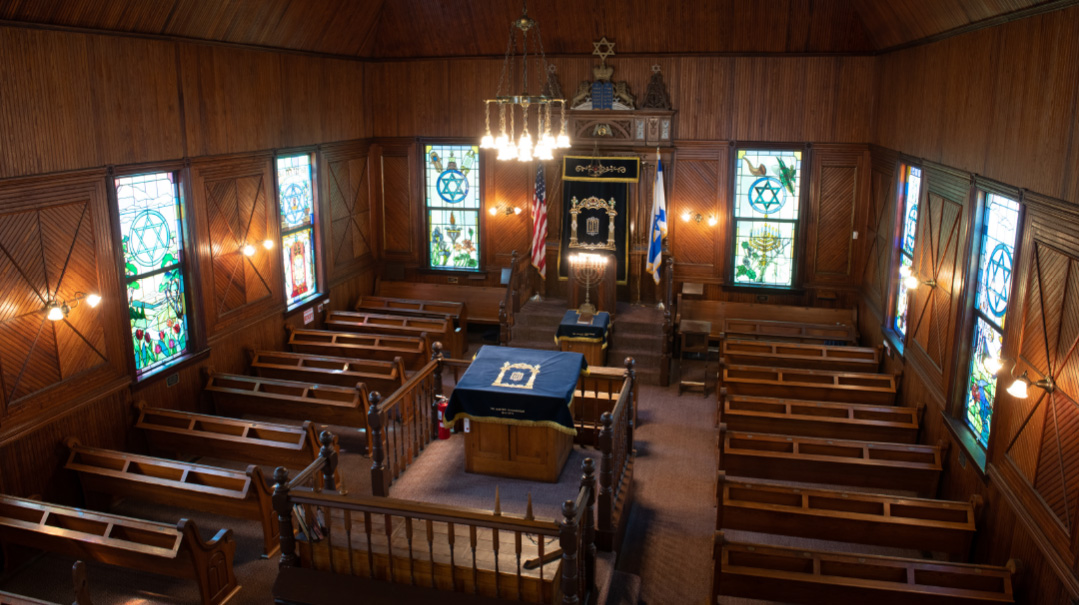
While the Bluzhever Rebbe, a regular visitor for decades, insisted that the shul operate in a strictly halachic manner, he did make one concession to the president: He agreed to leave his shtreimel in Brooklyn
All Jews Wewlcome
It was during that era — the first decade and a half after the war — that venerated European gedolim who had since settled in New York City and its surrounding environs started making their way upstate for the summer. Among them was the Bluzhever Rebbe, Rav Yisroel Spira. His family had been brutally murdered in the Holocaust, and the Rebbe himself had suffered its horrors as an inmate in the Janowska labor camp and the Bergen-Belsen concentration camp. Having reestablished the chassidus in Brooklyn, the Rebbe would travel to Hunter in the summers, to the delight of the local Jewish population and several other families who had discovered the mountaintop.
Among those families was the Reichel family, who made this trip each summer to Hunter and stayed in the mansion built by their great-grandfather some five decades earlier. Rabbi Dr. O. Asher Reichel, who married a granddaughter of Mr. Fischel and who succeeded his father-in-law Rabbi Herbert S. Goldstein as rabbi of the West Side Institutional Synagogue, would occupy the house during the summer. Rather than staying at home during the week and travelling upstate for the weekend like many city husbands, Rabbi Reichel would often leave the mountains for the weekends and travel to New York City to be with his congregation. His son, Aaron, would stay put for Shabbos, and served as the unofficial gabbai of the Hunter Synagogue in the 1960s, followed by his brother, Rabbi Hillel, into the 1970s.
“My father appointed me as gabbai because it was a diverse group there for davening every week — from people who weren’t religious at all to the Bluzhever — and my father wanted to make sure that no one got slighted if they didn’t get an aliyah or some sort of kibbud,” Aaron explains. “I was just a bochur at the time, and he figured no one would get upset over anything that I did. They wouldn’t take me too seriously, and we’d be able to avoid any confrontation.”
Rabbi Dr. Reichel’s gambit paid off, and those who spent their summers in Hunter during that era recall the sense of achdus that permeated the air, evident as soon as one entered the beis knesses on a Shabbos morning. On the right side of the aron kodesh sat Mr. Sluztky himself, president of the Hunter Synagogue and co-owner of Hunter Mountain, who had driven to shul that morning, and out of deference to its Orthodox character, parked a block away and walked the rest. On the opposite side sat the Bluzhever Rebbe, scion of a great chassidic dynasty, leader of hundreds of chassidim and a member of the Moetzes Gedolei HaTorah.
Yet the two men respected each other, and despite their vast differences, made the arrangement work in a manner that those present recall in almost magical terms. While the Rebbe insisted that the shul operate in a strictly halachic manner, one of the longtime Hunter Synagogue goers recalls that the Rebbe did make a concession to Sluztky. The ski magnate was worried that a shtreimel-clad figure walking the streets would raise the unwarranted attention and possible ire of some of the locals, and asked the Rebbe to refrain from wearing his shtreimel while in Hunter. The Rebbe acquiesced and wore only his weekday “beiber” hat in Hunter, leaving his shtreimel back in Brooklyn where passerby wouldn’t gawk at a bearded man wearing a silk jacket and fur hat in the sweltering summer heat.
Rabbi Yossi Friedler of Brooklyn, New York, a son of Rav Naftali Freidler, the rosh yeshivah of Breuer’s mesivta and yeshivah (who was instrumental in bringing many families from the Breuer’s kehillah to Hunter) remembers a group of (non-Bluzhev) chassidim who were in the area and walked into shul, hoping to catch a minyan. When they entered, they were aghast at the sight of an Israeli ( Zionist) flag flanking the aron kodesh. Incensed, the group stormed out, only to be called back by the Rebbe.
“Because of two shmattehs in front of the room, you’re not going to daven with a minyan?” he asked incredulously.
“The Rebbe saw Yidden — it didn’t matter what type you were. And though the Sluztky brothers weren’t frum themselves, they respected him,” Rabbi Friedler says.
The mutual courtesy extended by the secular magnate and the chassidic Rebbe went beyond the four walls of the shul, and Mr. Sluztky would often invite the Rebbe to enjoy his private resort, where the Rebbe would be able to take advantage of Hunter’s natural amenities in tranquility, without the fear of immodestly clad tourists intruding. The spirit spilled into the shul as well, whose mispallelim included members of the Breuer’s kehillah from Washington Heights, chassidim, and simple balabatim from the New York area, happy to have discovered Hunter.
Rabbi Reichel remembers Fred Margareten, a son of Ignatz, who together with his wife Regina (known as the “Matzah Queen of New York City”) emigrated from Hungary and founded the famed Horowitz Brothers and Margareten Company, whose sole product was originally Pesach matzah. The Margaretens would join the annual summer escape, building an entire estate a few yards away from the shul, known for decades as “Margareten Park.”
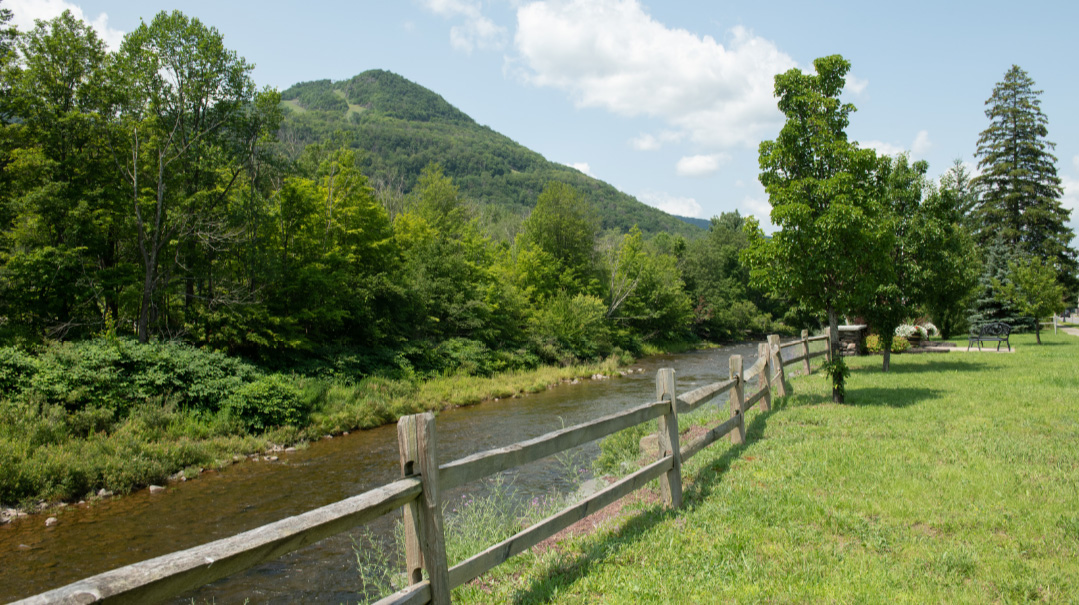
While Regina would spend time with the Margareten children in the estate, Ignatz would daven in the shul, and his son Fred reveled in watching the young yeshivah boys daven and then learn with gusto.
“Mr. Margareten wanted to incentivize us to come to minyan, and so he told us that the ten most dedicated boys who showed up to minyan would get tickets to a Yankee game along with some spending money,” remembers Rabbi Reichel.
“I would give Mr. Margareten a list of names, and sure enough, after each summer each of the boys would receive an envelope to his home with tickets for the best seats in Yankee Stadium, plus a dollar of spending money.” The subway ticket, circa 1960s, was a grand total of 15 cents, leaving the boys with a total of 85 cents of spending money, courtesy of the matzah mogul.
(The young Aaron Reichel’s responsibility to make sure the names of all the boys were on the list got him into trouble at least once, he recalls. “There was one boy in shul — who was a huge masmid. He showed up to every minyan and immediately afterward he would go straight to the Gemara. I couldn’t imagine him being mevatel Torah to go to a Yankee game, and I left him off the list, but when all the boys got their tickets the following season, the masmid wanted to know what happened to his.”)
The Yankee tickets weren’t the only time the Hunter boys saw Ignatz Margareten’s generosity up close. The boys took turns going around with a pushke, and Mr. Margareten was always the last stop. Long before the days that matching campaigns were in vogue, the boys would gather around and watch starry-eyed as Mr. Margareten counted all the donations that came in that day, and in one fell swoop, doubled the amount, much to the delight of his audience.
Rabbi Reichel recalls the time when he was writing his book on his grandfather, Rabbi Herbert S. Goldstein, which he called The Maverick Rabbi, the title hinting at his grandfather’s unique ability to cross party lines. “My grandfather graduated from the Hebrew Theological Seminary — which at that time claimed to be Conservative and Orthodox — but also got a more traditional semichah from Rabbi Shalom Elchanan Jaffe, President of the Agudath Harabonim, and Dr. Zadok Kapner, a rav and talmid chacham who went into medicine.
“Rabbi Goldstein went on to become the pulpit rabbi at the West Side Institutional Synagogue, then one of the most influential positions in America. He was the only rabbi ever to be elected president of the OU, the RCA, and the now defunct Synagogue Council of America, yet later deferred to the Moetzes Gedolei HaTorah and worked extensively with Mike Tress and Rabbi Moshe Sherer on Vaad Hatzalah activities,” Reichel says, noting that the Tress biography by Yonoson Rosenblum devotes a whole section to Rabbi Goldstein.
“Since the Fischel mansion did not have air conditioning, I would take my notes to the local library where I would sort and transcribe them,” he continues. “At one point, some of the boys from shul — including an einekel of the Bluzhever — asked if they could help. I told them I couldn’t pay them, but I would give them a thank you in the front of the book.”
The boys were happy with the arrangement, yet Rabbi Reichel wasn’t sure that the Bluzhever Rebbe wanted his grandson’s name appearing in a book about a rabbi who was affiliated with more centrist institutions. He instructed the boy to ask his grandfather if it was okay. The boy came back the next day with his grandfather’s response. “My zeide told me you should write my name — and add in afterwards, ‘a grandson of the Bluzhever Rebbe.’”
Pick up a copy of The Maverick Rabbi and you’ll see that the introduction contains a thank you to “Moishe Spira, a grandson of the world renowned Bluzhever Rebbe.” Today, that grandson, Rav Moshe Menachem Spira shlita, serves as a rebbe of Bluzhev, presiding over a court in Brooklyn.
One of the legendary stories surrounding the Rebbe’s days in Hunter recalls the time that a certain resident, Alex, who fancied himself to be the best fisherman in all of Hunter, approached the Rebbe. Alex explained that he was headed to a lake that had never quite produced the amount of fish he had hoped for, and sought the sage’s blessing. The Rebbe thought, and then responded: “V’yidgu l’rov b’kerev ha’aretz.”
When the Rebbe met Alex several hours later, he inquired about his trip. “Rabbi,” Alex responded somewhat dejectedly, “I didn’t catch even one fish!”
The Rebbe quickly responded. “Well, that should show you just how much my blessings are worth!”
And while perhaps the Rebbe’s fishy blessing hadn’t produced, it’s clear that his presence in the village fostered a brachah of peace, and the sense of brotherhood that permeated the village and its shul.
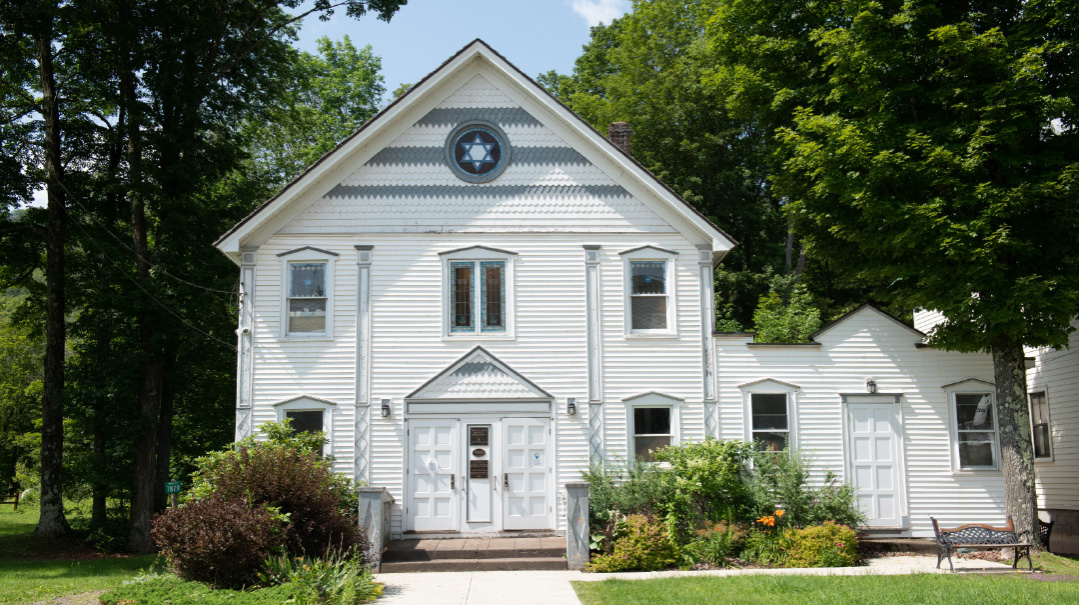
Today, to avoid any unpleasant technicalities, year-round Orthodox resident Neal Harris’s “Hunter Shul” rents the premises of the original Hunter Synagogue every week there’s a minyan of summer guests
Every Letter Counts
The Bluzhever Rebbe passed away in 1989, by which time Orville and Israel Slutzky had also retired from the helm of the synagogue, passing the mantle of leadership to the next generation. The responsibilities were transferred, but the respect they had for their ultra-Orthodox brothers never made it over. Along with the changing of the guard, a cloud of distrust and antagonism formed.
The synagogue leadership maintained the institution’s Orthodox character, inviting two rabbis from New Jersey — Rabbi Dr. John Krug of Teaneck, New Jersey and Rabbi Benzion Scheinfeld of Bergenfield — to lead the High Holiday services. For almost 35 years — right up until Covid precautions shuttered shuls across the country — the good rabbis would travel up to the shul, just as most of the vacationers were headed the opposite way on the Thruway, and lead the Rosh Hashanah and Yom Kippur prayers. But those services were primarily for its members.
The new board felt no obligation or responsibility to extend and open its premises for the village’s summer residents. They were fine with the shul remaining shuttered, save for those three days a year.
Meanwhile, the multitude of frum Jews who looked forward to enjoying their Hunter summer getaway, a highlight of which was davening and learning in the beautiful synagogue, remained blissfully unaware of the unfortunate change in synagogue leadership and the resulting attitude shift. They looked forward to using the shul as they had done for generations. But its grand doors were locked, with no one rushing to open them.
Neal Harris, Hunter’s only year-round Orthodox resident, was determined to come up with a solution. A charming septuagenarian who retired to Hunter after spending his adult life in New York City, Neal operates a small, kosher bed and breakfast down the road from the synagogue. When the previous gabbai left his post, Neal took up the shteller. (“B’makom she’ein ish,” he says when asked how he landed the job.)
Neal had previously served as executive director of Ohab Zedek, a kehillah in Manhattan’s the West Side — or as he likes to describe the position, “Assistant Rabbi, Assistant Chazzan, Assistant Everything” — and employing his finely honed administrative skills, came up with a fix.
He formed a new entity called the “Hunter Shul,” which rents the premises of the Hunter Synagogue for each week that they have a minyan. The rent, as well as other nominal expenses associated with running the shul, are covered by the donations that come in from the Mi Shebeirachs that Neal makes following each aliyah. Thanks to Neal’s happy, unassuming disposition, most visitors are unware of the complex legal structure under which the premises operate, which doesn’t bother Neal in the slightest.
Despite the tension that has unfortunately come to characterize the relationship between the Orthodox community and the synagogue board, the atmosphere within the summer community is reminiscent of the one enjoyed by its predecessors a third of a century hitherto. A new generation of Torah luminaries and their families now call Hunter their summer home, including Rav Dovid Schustal, rosh yeshivah in Lakewood’s Beth Medrash Govoha; Rav Sheya Krupenia, also of Beth Medrash Govoha; and Rav Nosson Weissman, the venerated mashgiach in the Yeshiva Gedola of Passaic.
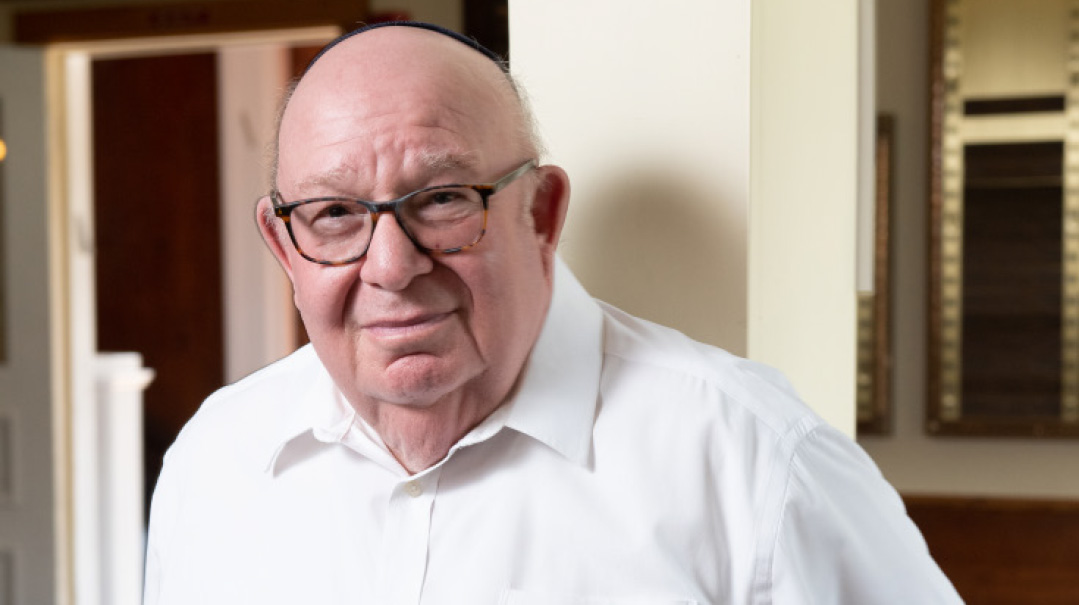
Joining these giants are families who look forward to their annual summer vacation and tourists who come up for a day or two, renting a nearby Airbnb and availing themselves of Hunter’s natural wonders.
Come Shabbos, the men will stream to the wooden synagogue down the road, the mountain looming behind them, and the soft rhythm of the creek accompanying them as they walk. When they arrive, at 9:00 sharp — not too late because of zeman Krias Shema, but also not too early for the chevreh used to a late Shabbos Shacharis — chassidim will join Litvaks, roshei yeshivah will sit side by side with folk wearing knitted yarmulkes, and a cheery, happy attitude pervades the room.
Davening proceeds, the regulars and visitors alike admiring the woodwork and artwork of the shul before tefillah commences, and Neal is at his post scanning the crowd, ensuring that everyone feels welcome and that at least one member of each group is given a kibbud. The shul has no official rabbi, but the standard Mi Shebeirachs include one for Rav Dovid Schustal (whom locals half joking, half reverently refer to as the “Hunter Rosh Yeshivah”) and to whom the elderly, colorful-kippah-clad Neal shows enormous deference.
Upon the conclusion of Mussaf, Neal announces the times for Minchah and Maariv, reminds everyone what to do “in the unlikely event that you see a bear” (you should neither make noise nor run), and thanks the baalei tefillah, the baal korei, and those who participated in the minyan before lowering his voice and adding, “and of course, the gabbai.” He then invites everybody to partake in a shul-sponsored kiddush to be held on his back porch.
With a full spread of homemade herring, vodka, cookies, and two large bottles of Kirkland Signature whiskey (among others), Neal starts off Kiddush — to the amusement of the assembled — with a loud “Hinneii” in the traditional tune of Havdalah. The crowd chuckles, and having broken the ice, Neal proceeds. (“I’ll make Kiddush on whiskey, and then David will do it on Hagafen for the frum people,” he says.)
Chassidim wash down the herring with a gleiz’l of brom’fn, and an elderly white-suited gentleman marvels at the pungent, savory finish of the bourbon. With the crowd enjoying and trees swaying in the background, the gabbai-turned-kiddush-host shares his thoughts about the secret to bringing everybody together. (“It’s the alcohol,” he says at first.)
“I think that the important message is that we are a very diverse group — but we all have a role to play. It’s like a sefer Torah itself — there are many letters, some have crowns, some are short, some are long, yet if even one is missing, it’s invalid. If anyone wants to count, we all have to.”
(Originally featured in Mishpacha, Issue 972)
Oops! We could not locate your form.

